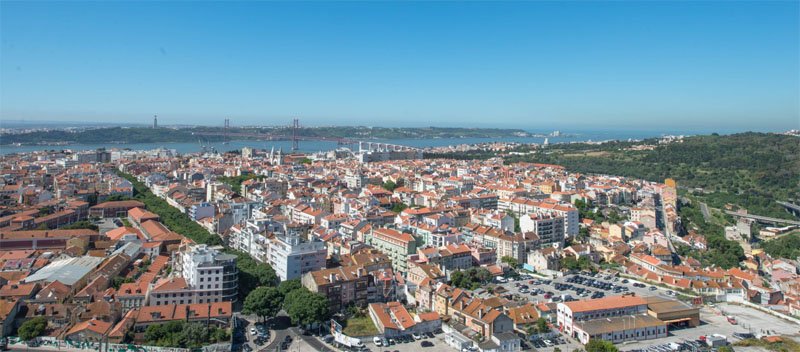Lisbon: NbS Enhancing Resilience through Urban Regeneration

To tackle these challenges, the city has taken a series of measures in the context of the Master Development Plan. The plan sets out guidelines and objectives for specific planning and local development. In particular, the municipal ecological structure takes into account ecological principles and the importance of preserving natural, forest, agricultural and cultural heritage. Together with the Biodiversity 2020 Strategy, the city also approved the Biodiversity Action Plan in 2016, putting implementation actions in the context of green infrastructure and climate change adaptation and mitigation.
Connecting green spaces by creating green corridors has been one of the main priorities. The best example is the Main Green Corridor, connecting Monsanto Forest Park to the city centre through Eduardo VII Park. Furthermore, the Eixo Central revamping project, currently being...
In the 1998 World Exhibition, the city of Lisbon promoted the regeneration of its eastern waterfront, today known as Parque das Nações. Previously an obsolete industrial area, with contaminated soil, today the area boasts 110 ha of green spaces, real estate, business centres and modern transport connections. Although it did not adopt an NbS approach from the beginning, the project made it possible to regenerate an obsolete and contaminated area through sustainable urbanisation, with the emphasis on green spaces. The project made better connections with Lisbon's ecological structure possible, as well as pollution control and monitoring. It has also made it possible to requalify the Tagus river salt marshes, focusing on biodiversity conservation and monitoring (especially migratory birds). This in turn created new opportunities for birdwatching tourism. The Polis projects have since replicated this experience in other urban areas in Portugal, providing cities with regenerated spaces, a better environment and better quality of life. These projects helped mainstream the idea that a healthy environment and urban regeneration have to complement each other in innovative ways.
The case of Lisbon also shows that even during a financial crisis a city can improve its citizens' wellbeing and its ecological structure with small-scale, concerted measures that are relatively cheap to implement.
The most common ways of financing the implementation of nature-based measures are:
- the municipal budget (general);
- municipal budget, decided on through participatory budget voting;
- European funds (mostly structural and cohesion funds 2007-2013);
- Lisbon´s ...
